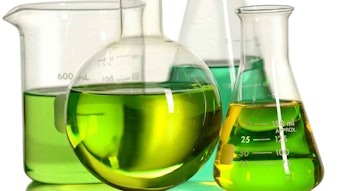Silicone polymers have experienced tremendous growth in the personal care market. Known since the 1860s and commercialized with the pioneering work of Rochow1 since the 1940s, they are now present in almost every personal care product category. The reason for this expansion is twofold: first, increasing classes of compounds have been developed; and second, the formulator has learned how to incorporate them efficiently into formulations. The continued development and application of silicone compounds for personal care requires the use of amphiphilic silicones—silicones with two or more groups that, in their pure form, are insoluble in one another.
These surface active or surfactant silicones move to the surface of the oil phase in which they are contained, much like sodium laureth sulfate moves to the surface of water, and lower the surface tension, allowing for easier spreading on the skin and hair. For most alkyl silicones, a concentration of 1% w/w lowers the surface tension. This makes them effective in providing a silicone-like feel to oils, most interestingly natural oils such as olive oil. If the concentration is increased to between 5–10% by weight, micelles form, providing a thixotrophic gel and change in aesthetics.
Lab Practical: Silicone Surfactants
- Silicone surfactants, like all anhydrous products, aqueous products and emulsions—both standard and inverted—should be added to the phase in which they are soluble.
- Most formulators think of silicone as an insoluble phase, but in fact it is not.
- Silicone fluids are soluble in silicone.
- Alkyl silicones are soluble in oil.
- PEG/PPG dimethicones are soluble in water.










